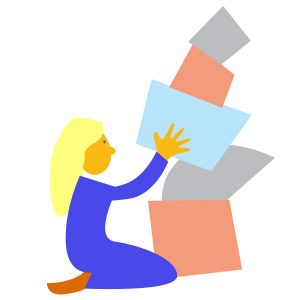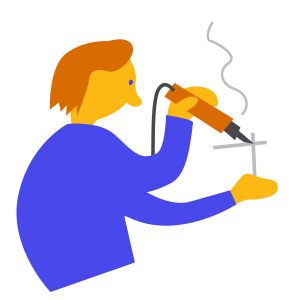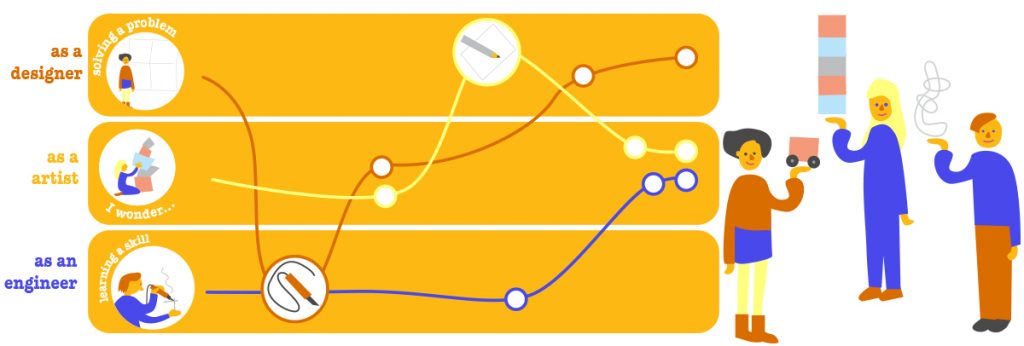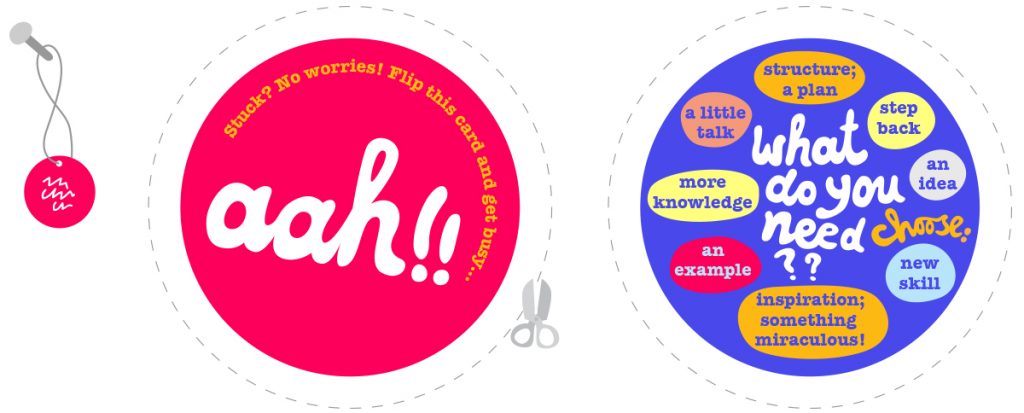Some people are excellent makers. Never seeing problems, only challenges. Solving things, being fearless, happy, explorative, the lot. And some people are not very good at making. They get stuck, sometimes even before they start. Or bored! Some are annoyed, fulminating about creativity and their lack of it. They just don’t get it. Or –when you look closer- they don’t get it done.
I’ve been struggling with this for years now. In raising my children, but also in developing interesting materials to inspire families into becoming makers. And in this search I didn’t find a single method that works. Most methods serve some, but no method serves all. And that got me thinking…
Strategy 1: as a designer
A lot of making is done in a project ore while developing a product: assignment is a problem or a challenge, you start with research and develop first ideas. Then you build prototypes and test. And continue development until done. There are a lot of varieties to this approach, and often they incorporate design thinking in some way. Products are often (prototypes for) inventions or machines.
Strategy 2: as an artist
Tinkertank (a very cool makerspace in the South of Germany) uses wonder as an engine to making. Their workshops are aimed at finding freedom within yourself. Participants (ages 8 – 16) start with a demolishing session. Old machines and toys (provided by the local trash and recycle company) are put on a table and the children are invited to take them apart. Violently if they want! I watched children going at a fancy camera with a huge saw, or hitting a computer with a hammer and an attitude. And because that is usually not allowed, it frees the children. It is amazing to see that happen.
Next step changes the energy: now the children go over the parts they discovered and look at everything as material for a project they want to do. A functioning robot, a work of art, anything goes. It’s really cool that a little DC engine from a printer can become part of a brand new crazy car. There is plenty of support and extra materials if needed. It’s free and it’s safe.
Strategy 3: as an engineer
With our Klooikoffers (Tinkeringboxes for families to mess around with) we take a very modest approach. We don’t tell people what to do, we want to inspire. The books that come with the box contain a manual: how to use the tools, how to do an electronic circuit? After that the families are on their own.
All three great methods to get into making. But not for everyone.
My daughter really doesn’t like to work as a designer. She is the type of girl that starts before the instruction is finished. She never reads the assignment and doesn’t stick to it. In a linear process she often feels she fails. But challenged as an artist, she feel great! Crazy ideas, a messy process, and rather unclear result. But a happy maker!
And for the Klooikoffers we get a lot of compliments and children show me really cool projects all the time. But some children (and parents) find it hard: ‘But what should we make?’ A difficult question.
Learning styles?
For a while I thought these were learning styles, that it reflects the way children do everything. But when I looked closer, I saw something else.
Flow
Sometimes a maker-session really works. Everyone is busy and engaged, working on their own projects or cooperating. There is talk, hard work and laughter. And then I saw it. These approaches are not learning styles, they are maker-strategies.
What happened?
There was this girl that immediately went for the materials. She was enchanted by their beauty and started making. As an artist. At a certain moment she got stuck. She wanted to add lights to her work, but didn’t know how. She asked for help and learned. As an engineer! And she needed a bit of a plan to continue. So she made a plan. As a designer.
Processes like this were everywhere. One started as a designer, one started as an artist and he third took the approach of and engineer. But after that they could switch strategies effortless. They started in a –for them- safe way but proved capable to use all three different strategies.
Like this:
How to organise this?
The million-dollar question! Well, I don’t know. But I tried some things.
Getting it
The real maker superpower is, understanding what you are doing and what you need. Being judged by others is not always the best: I once read a report on making in which the researchers were not very pleased with the decorating some girls did while making. In their view het boys did better: they were getting into construction! They believed that to be better making than the girls’ work. Proper technical products! That made me really sad.
Making belongs to the makers. Task of others is to create fruitful circumstances. Judging is no part of that.
The offer
I like to think you can offer content for the three different strategies. So you provide a start for all children. For example like this, in teaching the basics of electronics:
People who like to start a a designer can be given a challenged. That will inspire them to acquire the knowledge they need to continue.
 The artist can be given a nice story or work of art. That will inspire them into creating their own work. And get to the knowledge.
The artist can be given a nice story or work of art. That will inspire them into creating their own work. And get to the knowledge.
 (Headband: Adafruit)
(Headband: Adafruit)
Engineers can be given knowledge. That will inspire them into getting an deven deeper understanding and then create a product.
A method
Knowing what you need is important. First I thought of a big yes/no flow with all the answers in it. I felt sooooo clever. But then my husband intervened:’ You always want people to be independent. Are you really sketching a watertight method?!’
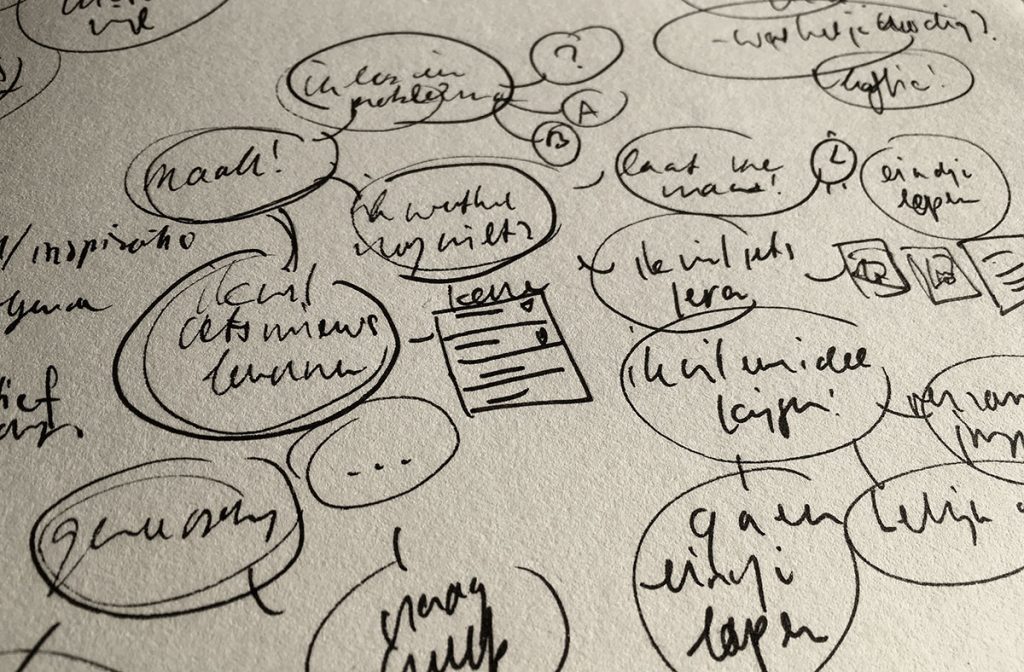
Ehh, well, no that’s not what I want. (Thank you Roel.) So instead I made a little coaster. (In Holland (beer)coasters are traditionally used to sketch world changing ideas on…) A small unlock-the-maker tool.
A simple self scan instrument that helps in understanding your needs. By asking what is necessary you get insight into your needs and the options that you can choose from. There’s always a next step!
Choose whatever you need, and once you know this, ask a parent, peer of teacher for help.
Guidance
As a teacher or coach you prepare yourself by collecting things that can help. Collect artworks or other inspiring material for the artists-approach, collect challenges and processes for the designer approach and collect tools, how-to’s and knowledge for the engineers.
Learning together
2018 update: Right now I am testing a lesson-plan developed based on the three strategies. It involves a card-deck and a custom coaster. I’ll publish my preliminary outcomes as soon as.
Already got something to share? I am at @astridpoot.

